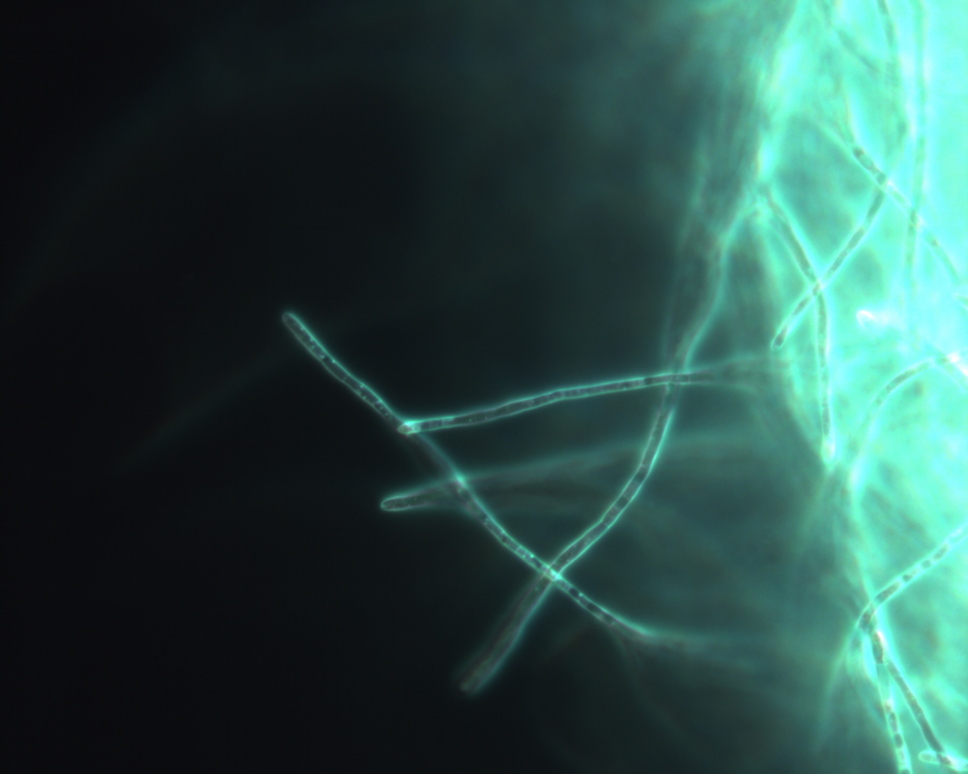
Even though I need to wait 90 minutes for the next step of the process, I'm not sitting here idle. A key part of having an enjoyable brew day, I've found, is to clean up incrementally during these down times, and prepare everything for the next step. For instance, after I started the mashing process, I put away all of the grain grinding equipment and my bag of bulk barley, swept loose grain from the floor, and now I'm preparing my lauter tun for the next step.
During this 90 minute mashing process enzymes in the malted barley convert starches into simple sugars like alpha and beta amylase. The ideal temp to convert each of these sugars is different, so recipes pick temps somewhere in the middle based on which sugars they want the most of. This choice can affect the body and residual sweetness left in the beer after fermentation.
Once all the grain is added I add a mesh screen above the water level in the kettle, attach a recirculation arm to my Grainfather's pump and tell it to start the 90 min mashing process. It recirculates water throughout the process to improve efficiency and clarity in the beer.
After the water heats up I can "dough in" or add my ground grain to the mash water. I have a long metal mashing paddle that makes it easier to stir the grain as I add it to remove clumps, which helps improve mashing efficiency later. Basically you are making a barley porridge and the consistency at the end is pretty similar to oatmeal.
While the mash water heats up, I grind my grain using a hand grinder. For some recipes I get my malted barley pre-ground, but I have started buying my base malt in bulk, and the barley comes whole.
Grinding the grain removes the kernel from the husk and exposes more of the starch to the water so the mashing process is much more efficient. Malted barley contains an enzyme that will convert starches in the barley to sugar when immersed in water. #brewing #happybrewyear #beer
Happy Brew Year! Today I'm going to brew a simple Mexican-style dark Lager which traditionally were based on a Vienna dark lager but with US ingredients including flaked corn. In this thread I will document my brew day.
The first step is to heat up my mash water. I brew beer using a Grainfather brewing system, which automates a lot of the process for me and shaves a few hours off of my brew day. #brewing #happybrewyear #beer
My 2022 temperature blanket is done.*
365 days
2 rows a day
730 rows**
360 stitches per row
262,800 stitches**
Roughly 20 minutes per row
Approximately 250 hours of knitting
Temperatures from -5ºC - 35ºC
19 colours of yarn
And impossible to photograph all in one go, because it's BIG - roughly 6ft wide and over 6ft in length.
* Though I'm probably going to add a crochet border.
** Not including cast on / off and setup rows.
When I visited Canada I was surprised at how much better the chocolate, even the inexpensive mass-produced chocolate, tasted compared to comparable brands in the US.
I could be because Canada has tighter regulations on % of chocolate in their recipes, but today I learned it was probably also the lack of lead and cadmium: https://metro.co.uk/2022/12/29/hershey-facing-lawsuit-over-heavy-metals-found-in-their-chocolates-18012980/
Annual reminder that while many #cybersecurity professionals are also deeply invested and interested in privacy, sometimes the two align and sometimes they’re opposed to one another in practicality. Always be conscious of when you’re sacrificing your (and more importantly other peoples’) privacy for the sake of security, and be very careful and measured about those decisions. Lost privacy rarely comes back. Not in business, and not in society at large.
My son asked if I would teach him how to weave so yesterday he learned how to warp a rigid heddle loom and the basics of plain weaving. Now he is busy making his mother a scarf. I'm wishing I had a smaller rigid heddle loom, this 32" Kromski is not ideal for a kid. That said, his beat is pretty consistent and he's doing a decent job managing his selvedges so far. #weaving
I just finished reading The Romance of French Weaving which covers the history of French textiles from the early Gauls to the early nineteenth century. I learned quite a bit about the origin and etymology of fiber terms in general from it.
Next on the list is The Valkyries' Loom, which covers Scandinavian weaving history of the Norse people.
I'm enjoying reading about the weaving histories of specific cultures. Are there any others that folks recommend? #weaving #history
After the report about the Girl Scout mom getting booted from Radio City Music Hall, I spent the last two days reporting out the use of facial recognition technology by the Madison Square Garden empire to keep hundreds of lawyers that work for firms that have sued it from attending concerts, sporting events and shows. It is a radical use of the technology by a private company and I am truly shocked by how forthright MSG is about its real-world block list. https://www.nytimes.com/2022/12/22/nyregion/madison-square-garden-facial-recognition.html
The ayes have it! Thank you everyone for your suggestions. I sewed a label on my new scarf.
TikTok and its Chinese parent company ByteDance spied on Forbes journalists, including me. Read the shocking story here: https://www.forbes.com/sites/emilybaker-white/2022/12/22/tiktok-tracks-forbes-journalists-bytedance
I recently ordered a small package of fabric labels so I could add a simple "Handwoven by Kyle Rankin" label on things I made for others (you can see an example on the wider scarf at the top of this thread).
I'm torn whether I should add the label to something I've made for myself. I mean I already know it was handwoven by me, but perhaps it would be good to add it for posterity decades from now?
Those of you who label your projects, do you label projects you make only for yourself? #weaving
Between 1300 & 1362, as temperatures fell & the #LittleIceAge set in, #weavers in #Greenland made thicker cloth, #WeftDominant. Fascinating #LongRead on #archaeology, the evolution of #spinning & #weaving technique, & #textile as #money, the findings of Michèle Hayeur Smith.
Also mentions Iceland's exports of #fish, which reached the #LadyOfClare in Suffolk!
Article by Francine Russo: https://www.scientificamerican.com/article/viking-textiles-show-women-had-tremendous-power/
I finished my scarf! I had previously made a scarf as a gift that I liked so much that I decided to make a narrower men's version for myself. I've attached pictures of both for comparison.
This weave was pretty loose to get the pattern I wanted. As a result I had to be very careful with it off the loom, and also fix a few picks that were out of place.
I ended up washing this in hot water and agitating it quite a bit, because I wanted it to full and shrink a bit into its final form. #weaving
- Personal Site
- https://kylerank.in
- Personal Bibliography
- https://kylerank.in/writing.html
Technical author, FOSS advocate, public speaker, Linux security & infrastructure geek, author of The Best of Hack and /: Linux Admin Crash Course, Linux Hardening in Hostile Networks and many other books, ex-Linux Journal columnist.

